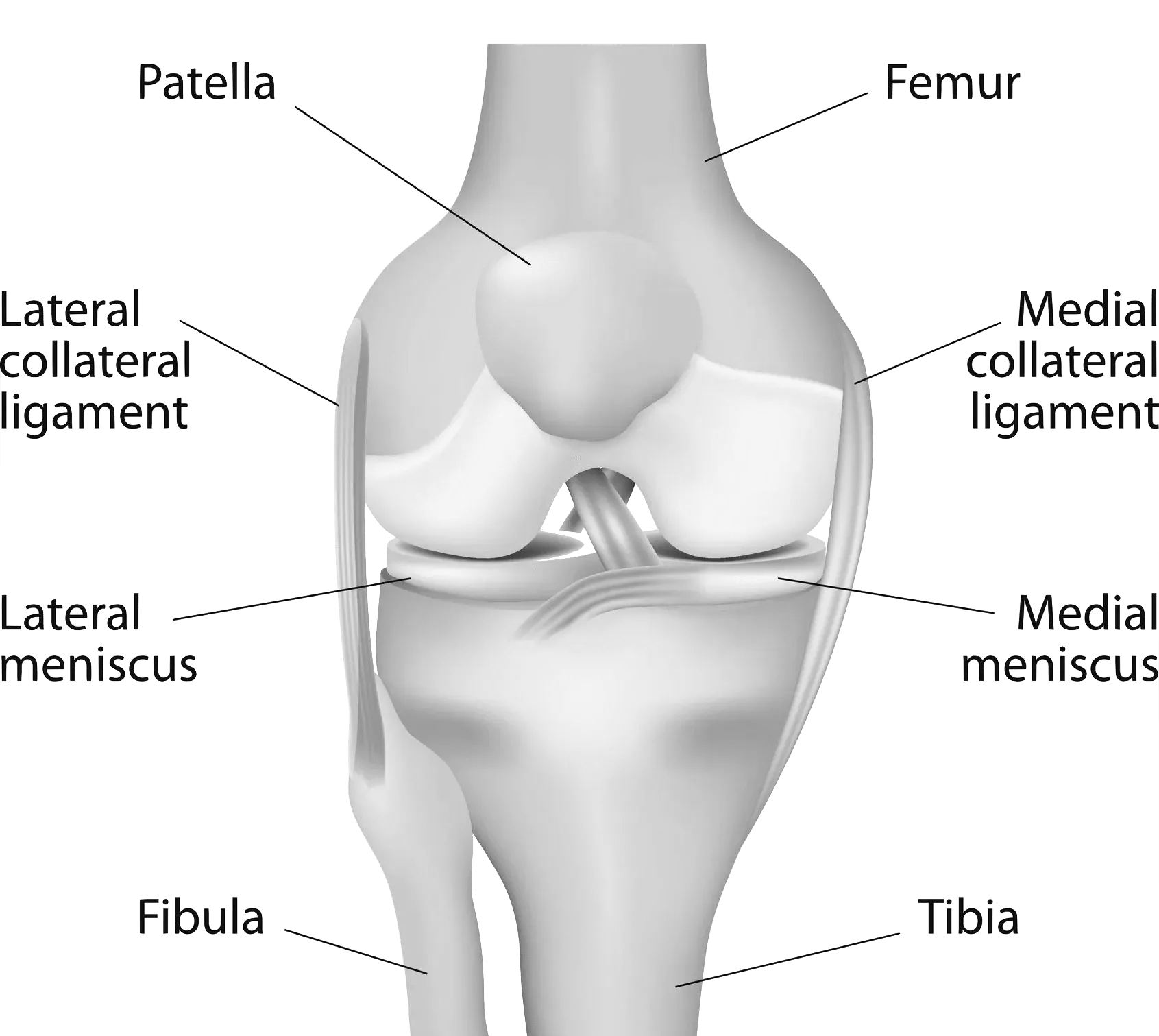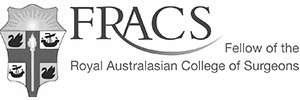Knee Meniscus Tears
What is a Knee Meniscal Tear?
A Meniscal Tear is a break in the meniscus wedge (cartilage) in your knee.
Meniscal tears are common cartilage injuries in both contact and non contact sports that require jumping quick lateral movements (eg: netball)
Meniscus tears can be painful and debilitating.
A torn meniscus causes pain, swelling and stiffness. You also might feel a block to knee motion and have trouble extending your knee fully.
What is the Meniscus?
Each of your knees has two C-shaped pieces of menisci (cartilages) on the
- the inner side (medial meniscus)
- outer side (lateral meniscus).
They act like a cushion between your shinbone and your thigh bone (menisci). The meniscus’ role is to:
- Reduce Wear
- Protect Against Arthritis
- Assist With The Stability Of The Knee Joint, and
- Help Disperse Fluid Around The Knee Joint Effectively.
The meniscus is an important structure of the knee, and damage to the meniscus can lead to osteoarthritis of the knee in the long term.
Causes of a Meniscal Tears
Degenerative
Degenerative tears occur as part of the ageing process due to progressive wear or as a result of habitual, prolonged squatting.
Sometimes no trauma is required as the meniscus stiffens and weakens with age.
Meniscus tears are a special risk for older athletes and more than 40% of active patients 65 or older have them.
Trauma
Any activity that causes you to forcefully twist or rotate your knee, especially when putting your full weight on it, can lead to a torn meniscus.
The meniscal cartilage is at risk of tearing due to constant exposure to repetitive loading as we walk, run or perform other activities.
Where the knee is partially bent under load or involved in twisting motions (pivoting during sports, squatting, heavy lifting and changing direction) the meniscus can tear under pressure.
Higher risk sports include:
- Football
- Basketball
- Soccer
- Tennis
Meniscal tears can also occur in combination with tears of ligaments around the knee (eg an ACL Tear).
Symptoms of a Meniscal Tear
Meniscal tears have the following symptoms:
- knee pain
- swelling within 24 hours
- difficulty walking for several days.
While these acute symptoms can resolve spontaneously, other prolonged symptoms can include:
- Loss Of Full Range Of Motion
- Inability To Either Bend Or Fully Straighten The Knee
- Pain With Walking
- Tenderness Along The Joint Line
- A Tendency For Your Knee To Get "stuck" Or Lock Up
- Audible ‘clicking’
Painful instability may be present and this can be difficult to distinguish from instability resulting from an ACL rupture.
Meniscal Tear Diagnosis
Your doctor will need to diagnose the specific nature of the torn meniscus or the extent of any osteoarthritis in the knee joint. Often, meniscus damage can be identified during a physical examination.
Diagnostic Imaging
X-rays do not show cartilage but are often normal as they can help rule out other problems with the knee that may have similar symptoms like fractures (broken bone) or ACL injury.
MRI can create detailed images of both hard and soft tissues within your knee. An MRI can produce cross-sectional images of internal structures required if the diagnosis is unclear or if other soft tissue injuries are suspected such as ligament injuries or articular cartilage injuries.
Types of Meniscus Tears
Treatment for a Meniscal Tear
After a clinical assessment treatment is tailored to the patient’s individual needs. The less active patient may be able to return to a quieter lifestyle without surgery
Surgery is advocated for patients less than 25 years old who are active especially if the tear is “fresh”, repairable and associated with an ACL injury.
While most Meniscal Tears are not repairable (ie. cannot be sutured back together), the removal of the torn portion only (ie. partial Meniscectomy) and leaving the unaffected meniscus remnant is a surgical option. The result of this procedure can be a stable knee.
Surgery is recommended where patients endure ongoing episodes of:
- Pain,
- Instability,
- Swelling And
- Locking
Non-surgical treatment involves physical therapy and rehabilitation to strengthen the quadriceps and hamstrings muscles to stabilise the knee and maintain range of movement.
When Should a Meniscus Tear Be Operated On?
Most meniscal tears undergo a 3-4 week period of non-surgical treatment. Provided symptoms are continuing to improve there is no need to rush into surgery. Once beyond 6-8 weeks of symptoms however, if resolution has not already occurred, it is unlikely to do so and surgery can be considered. If symptoms are deteriorating then surgery can be considered earlier.
What Indications Are there For Early Surgery?
Uncommonly the patient presents with a locked knee, which has either no movement or severely impaired movement because the meniscus tear is jammed in the knee and causing a mechanical impediment to motion. In these patients semi urgent surgery is advised to unlock the knee and prevent damage that can be caused by the jammed meniscus.
Even more uncommonly, a patient can present with no loss of motion but the MRI scan shows a large meniscal tear jammed within the knee (bucket handle tear). These patients also require semi urgent surgery, as the tear will eventually lead to damage to the normal cartilage that lines the knee if the jammed meniscus is not removed.
Is the Meniscus Removed or Repaired?
In the majority of cases the meniscus tear is unable to be repaired and is removed (meniscectomy).
Meniscal Surgery
Surgery may be required if a patient wishes to restore function and stability and return to:
- Sports involving a cutting or pivoting movements (e.g. soccer, football and netball) or
- Physical jobs involving a cutting or pivoting movements (eg. policeman, fireman, builders, etc)
Surgical Solutions include:
- Arthroscopic Surgery
- Meniscus Repair Surgery
- Partial or Total Knee Replacement Surgery
What Determines if a Meniscus can be Repaired?
Many factors are considered, including
- How long the tear has been present
- The type of tear and it’s orientation
- The location of the tear in the meniscus
- The age of the patient
How is the Meniscus Removed (Meniscectomy)?
The meniscus is removed via keyhole surgery (arthroscopy). Usually two stab incisions are made in the knee. A camera is inserted in one incision, the knee inflated with fluid to help visualisation, and instruments such as scissors and shavers are introduced via the other incision to remove the torn meniscus.
How is the Meniscus Repaired?
The meniscus is repaired also via keyhole surgery (arthroscopy). Usually two stab incisions are made in the knee. The meniscus tear is visualised to determine if it is repairable or not. The repair is usually performed using suture material with or without suture darts. Sometimes additional incisions are required to complete the repair.
After Meniscus Loss (Meniscectomy)?
Loss of a portion of the meniscus can lead to increased stress on the articular cartilage that lines the knee. We know that if the entire meniscus (100%) is removed, that side of the knee, which now has no meniscus, will develop arthritis in 20-30 years time. Thankfully, in the vast majority of cases much less than 100% of the meniscus is usually removed (most commonly 30%).
The general principle is to remove as little of the meniscus as possible to improve the patient’s symptoms. If the adjacent cartilage is already worn (pre existing osteoarthritis), then the likelihood of progression of the arthritis is higher.
Will Meniscus Heal by Itself?
Some meniscal tears have the capacity to heal. Generally, these are smaller tears, which occur in the periphery of the meniscus where there is greater blood supply.
The meniscus also has greater healing potential if it fulfills the above criteria and also occurs in conjunction with an ACL rupture. This capacity to heal diminishes with age. Most meniscal tears however do not heal. They can however become asymptomatic. If this occurs, no surgery is required.
Can you have a meniscal tear and have no symptoms?
The incidence of a meniscal tear with no symptoms, diagnosed incidentally on a MRI scan is approximately 5%. This percentage increases with increasing age. For example, if you have pain on the inner side of your knee (medial side) and the MRI shows a tear in the meniscus on the outer side (lateral) then it is likely that your meniscal tear is asymptomatic and the cause of your pain is something other than the meniscal tear.







